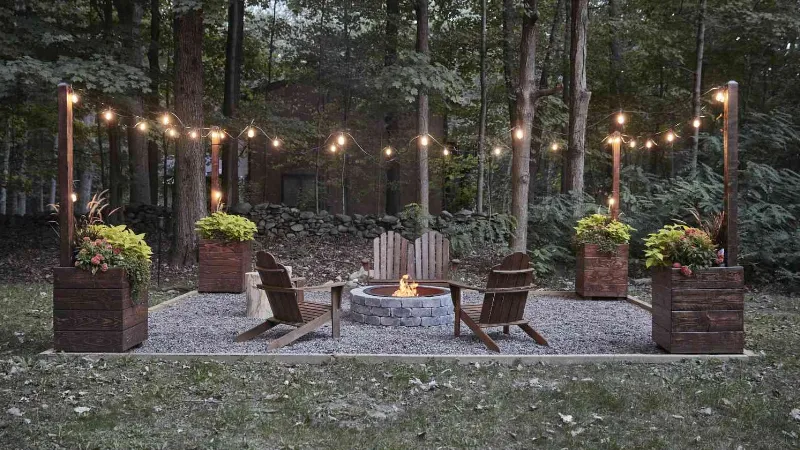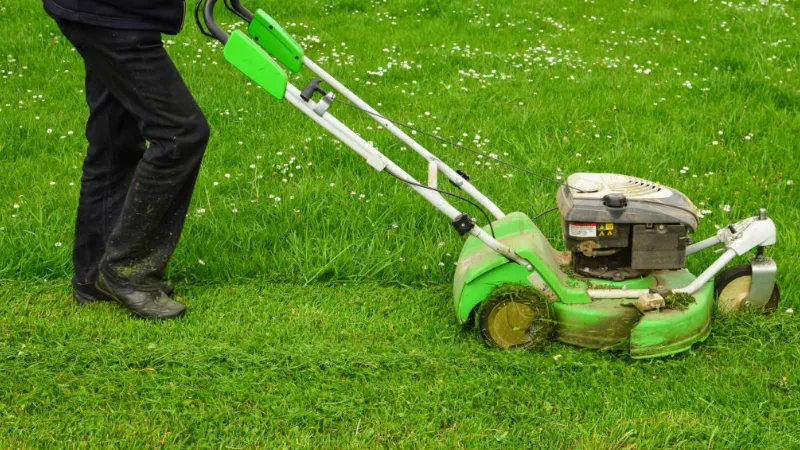If you want to grow a healthy lawn, knowing when to plant grass seed is crucial. Below will give you grass planting seeds tips. Let’s dive into the post.
The type of grass you are growing will determine the best time to plant grass seed. It’s generally best to plant cool-season grass seed in early fall and warm-season grass seed in late spring.
Please read on for more detailed information.
When to Plant Grass Seed – What to Consider
When to plant grass seed depends on a number of variables, including soil temperatures, the predicted weather, the choice of grass species, and location.
Your local climate is a particular factor if you want to minimise the risk of seedling-related diseases. Gardeners in the warmer south may find they can plant their seed earlier than those in cooler northern areas. The kind of grass, however, is also important.
The preferences of various grass species vary, just as they do for each individual.
For the best germination, warm-season grasses like Bermuda grass, zoysia grass, and centipede grass prefer soil temperatures at or above 65°F (18°C), whereas cool-season grasses like tall fescue and ryegrass prefer soil temperatures below 65°F (18°C).
What follows in terms of weather is equally important. A favorable environment is necessary for the germination and growth of any seedling. As a result of the plants not having enough time to establish, exposing a plant to extremes such as harsh summers or winters can eventually cause the grass to fail.
To develop your lawn maintenance strategy, learn how to identify crabgrass. Below will give you a full explanation of what is crabgrass.
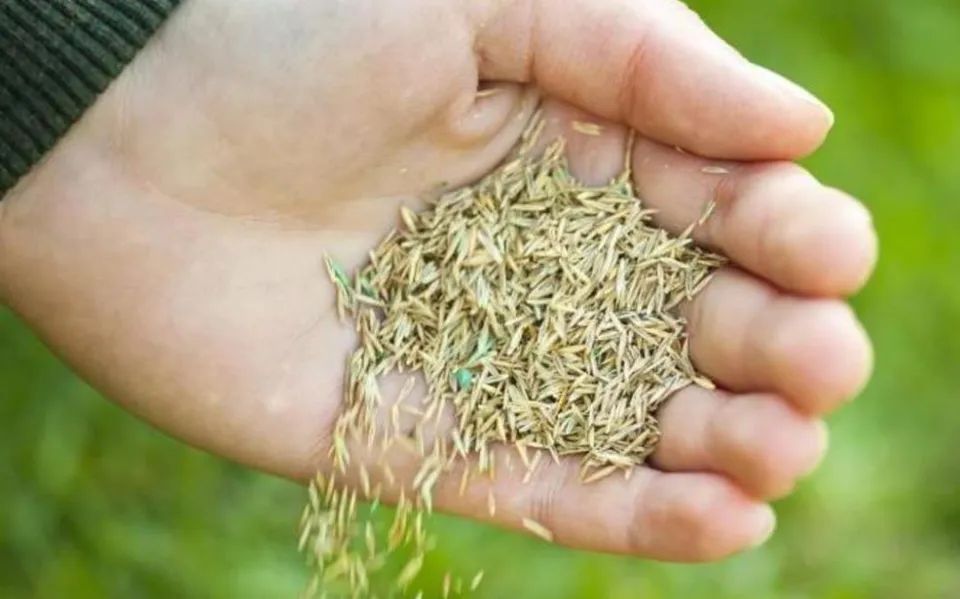
Why Fall is Best for Cool-season Grasses?
The ideal time to sow cool-season grass seed is in the fall due to a number of distinct benefits. The soil is still warm in early autumn thanks to months of summer sun. Newly sown cool-season grass seed grows quickly and is established when the soil is warm, the daytime temperatures are moderate, and the evenings are cool.
The ideal soil temperature for the germination of cool-season grass seed is between 50 and 60 degrees Fahrenheit. This roughly corresponds to daytime air temperatures in the 60°F to 75°F range. An inexpensive soil thermometer, available at garden stores and online retailers, can help eliminate the guesswork.
The earlier cool fall temperatures and ideal planting times arrive, the further north you live. The Upper Midwest state of Minnesota, for instance, seeds cool-season lawns from mid-August to mid-September.1 September and October are ideal months for seeding cool-season lawns for people with transition-zone lawns in central and northern Arkansas.
Plant cool-season grass seed, as a general rule, 45 days or more prior to the anticipated date of your first fall frost, or as soon as soil and air temperatures are still above ideal. In addition to a second cool growing season in the spring, your grasses will enjoy a full fall season. Your local county extension agent can help with advice on average frost dates and optimal timing for seeding lawns in your area.
Fall planting is advantageous in that it provides the consistent soil moisture that newly planted seed needs. More rain is typically expected in the fall, which lowers the risk of cool-season seeds drying out and eliminates the need for additional watering on your part. Using premium drought-tolerant, water-conserving grass seed products, such as Pennington Smart Seed and Pennington One Step Complete, lowers the risk of problems even more.
The second-best time to plant cool-season lawn grasses is in the spring, after the soil and air temperatures have warmed to the ideal level. However, late-melting snows and early spring rains can keep soil cold and overly wet, giving early weeds an advantage. Furthermore, grasses have a shorter window of opportunity to establish themselves before higher temperatures prevent germination and cool-season grass growth slows.
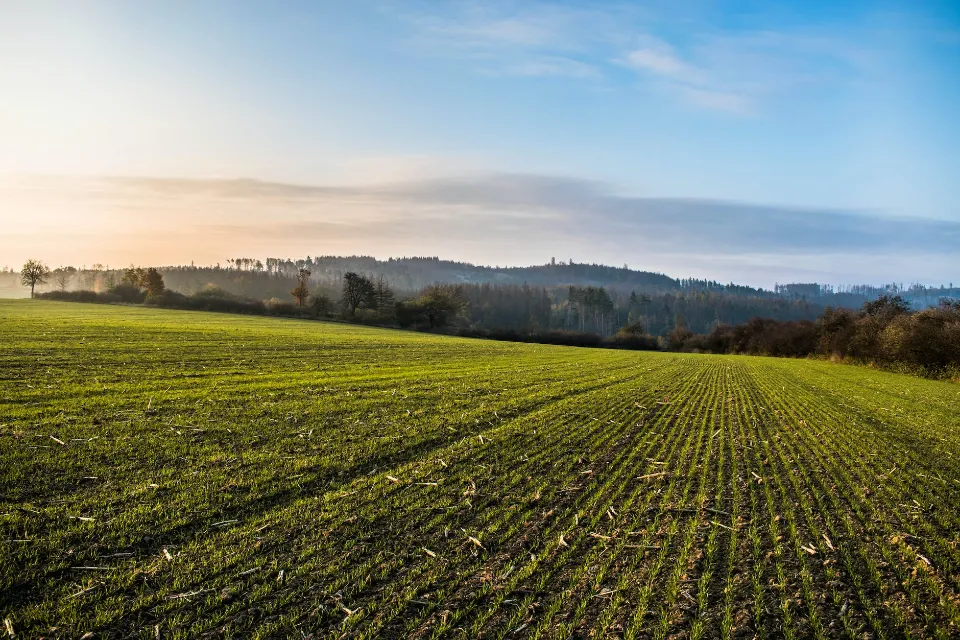
Why Spring is Best for Warm-season Grasses?
Warm-season grasses germinate best when soil temperatures are consistently between 65 and 70 degrees Fahrenheit. This generally corresponds to daytime air temperatures near 80°F or more. Warm-season grasses have the advantage of warm soil and early seasonal rains when they are planted in the late spring or early summer. These factors help keep soil moisture available during germination and establishment.
Best warm-season planting times vary by location, just like with cool-season grasses. In California, the best time to seed warm-season lawns is from mid-April to mid-May.3 Lawn owners in central and southern Arkansas schedule the seeding of warm-season grass for late May through June.2 At the first sign of spring, it’s tempting to go outside and plant seeds, but perseverance pays off. Wait until the soil has warmed and all threat of frost has passed. A cold, wet soil is a perfect environment for rotting seed, disease, and poor germination. Your county extension agent can provide assistance with anticipated frost dates and prompt guidance when unforeseen weather conditions are a concern.
Generally speaking, warm-season grasses have plenty of time to establish themselves before winter if they are planted at least 90 days before the first fall frost. These summer-loving grasses go dormant once temperatures drop near 55°F, so late-planted seedlings can’t prepare for what’s ahead. With proper timing, warm-season grass seed gets a natural boost from summer’s warmth and a full season of active growth and development before cooling temperatures bring on winter dormancy.
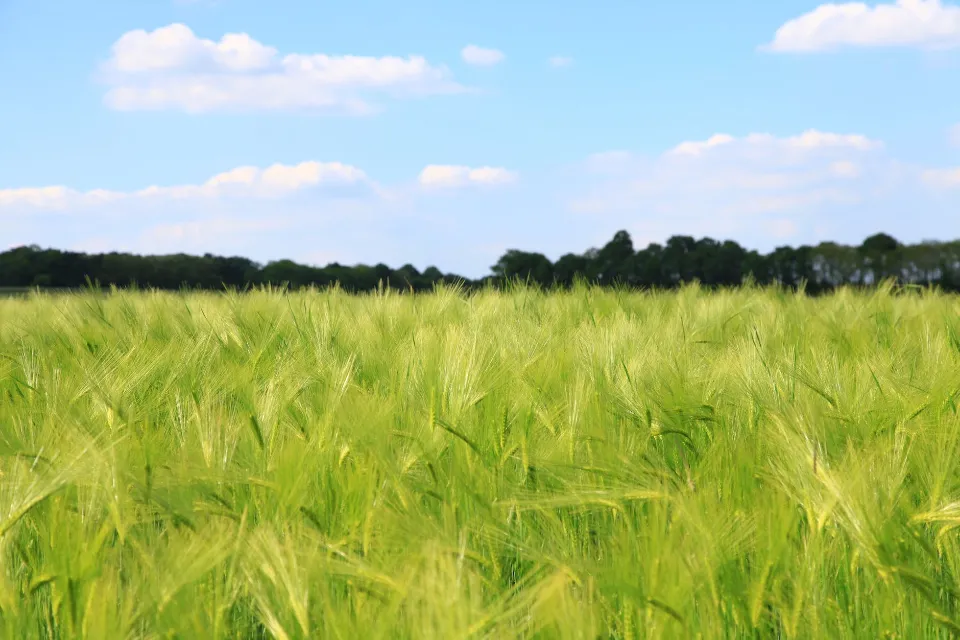
Maintaining Your Spring Seeding
The effects won’t be visible right away. Warm-season grasses can take up to three weeks to germinate, compared to five to seven days for cool-season grasses.
Here are some tips on how to nourish your grass as it grows:
- Be patient with grass that is in the shade because it will take longer for the seeds to sprout there.
- Regular watering of your lawn is necessary, but avoid overwatering as this will harm the developing grass.
- Do not mow your grass until at least two months have passed. When it’s time to cut the grass, it will be about three inches tall.
- Compost your kitchen and garden scraps to give your lawn more nutrients as it grows.
Tips for Planting Grass Seed in the Summer
Cool Season Grass Seed
It is not recommended that you plant cool season grass seed at this time because the grass will be dormant. Unless you live in a very remote part of the North, it will not be worth your time and effort. Sod University suggests blocking out the dates of June–early August before doing this.
Warm Season Grass Seed
Due to the intense heat, the summer is also not the best time to plant warm-season grass seed. It would require extensive time and financial investment to irrigate it. This can be done in the summer, but it will take a lot more time and money to provide the right amount of irrigation. But, How Long Does Grass Seed Last?

How to Plant Grass Seed in the Winter?
Warm-season or cool-season grass seed should not be planted in the winter. The chances of it sticking around and not washing away during the winter are pretty low. In contrast, the planting seasons of spring and fall will bring about the greatest success.
How to Prepare Your Lawn?
When seeding your lawn, timing is crucial, but preparation is also essential. By preparing your lawn, you can be sure that the soil will support the germination and growth of fresh grass seed. There are several steps involved in yard preparation, such as aerating, testing the soil, and leveling the lawn. Take a closer look at each step of the process below.
- Level the Lawn
It’s crucial to clear out any irregularities in your lawn, such as rocks and debris, before sowing fresh seed. A soil mixture made of sand, topsoil, and compost should also be used to level the various peaks and valleys in your yard. Use more than just topsoil because this fresh mixture may contain weed seeds and other poisonous nutrients.
- Address Bare Spots
Numerous factors, including high foot traffic, drought, and insect infestations, can cause bare spots to appear in lawns. Once you’ve located the brown areas in your lawn, you can prepare them for overseeding by excavating the area, incorporating fresh topsoil, and leveling the ground with a rake. From there, the bare spot is ready for seeding. Pre-emergent herbicides can be used in conjunction with fertilizers to suppress weed germination and help prevent future bare patches.
- Test Your Soil
The pH levels of your soil determine a lot of a seed’s growth. Your soil should be tested to determine whether it is acidic, neutral, or basic because every lawn has a different pH level. These findings will let you know which minerals and nutrients your soil is deficient in. Numerous home improvement retailers, like Lowe’s or Home Depot, offer straightforward five- or six-step DIY soil testing kits. If you prefer to use a professional, many full-service companies will do it for you.
- Try Aeration
It’s time to aerate your lawn when the soil has become compaction and stagnation. This reduces the stress caused by droughts while loosening your compacted soil and aiding in weed control. To aerate for less money, try using easy DIY techniques like garden forks or aerator shoes. However, you might want to hire lawn care specialists for soil that has been compressed more tightly.
- Use Fertilizer
By fertilizing, you can give new lawns the concentrated nutrients they need to grow strong roots. While warm-season grasses can be fertilized all summer long, cool-season grasses should be spread with fertilizer in the fall. Many homeowners choose a starter fertilizer, which uses nutrients to meet the needs of growing seeds until the root system develops.
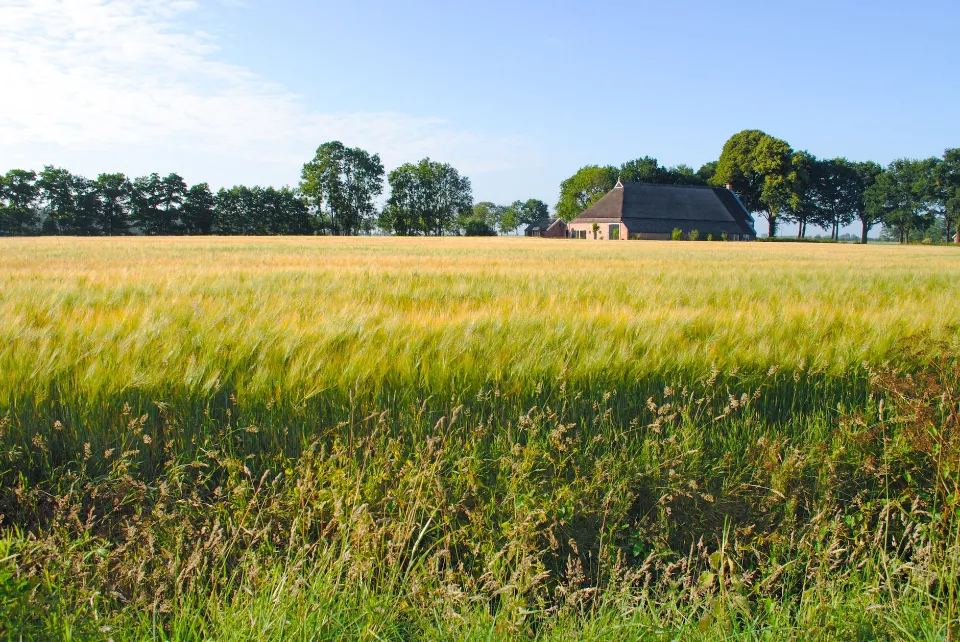
How Long Does Grass Seed Take to Grow?
As long as you have planted your grass seed at the right time, it should be quick to establish.
‘Expect to see new growth appearing between 5-30 days after planting. According to Witz, it should take about 30 days to establish itself and two months to be ready for mowing.
‘Use the highest mower deck setting and wait until your new grass is at least 3 inches (8 cm) tall before mowing it to prevent cutting off too much at once.’
Tips for Planting Grass Seed
- Successful grass seed planting depends on careful preparation. ‘According to Witz, testing the nutrient content of your soil is a frequently missed but essential step in encouraging the growth of healthy new grass. ‘If your test shows any significant nutrient deficiencies, correct them before planting.’ This might entail fertilizing or adding a liming product to add nutrients.
- Debris and stones should be removed from the planting area, and the ground should be raked to make it as even and finely textured as possible.
- ‘Use a handheld or broadcast spreader to apply your seed and use a lawn-starter fertilizer to supply a nutrient boost,’ says Witz.
- ‘Immediately after seeding, the area should be lightly raked, top dress, rolled or drugged over with a mat or similar device, to ideally encourage what is referred to as “seed-to-soil” contact,’ adds Gore.
- Consider laying straw or hay over the area afterward to prevent the loss of seed from birds and washouts from rain.
- Once your seeds start to sprout, water them lightly every day for a few days, then water them less frequently but more deeply for a few more days.
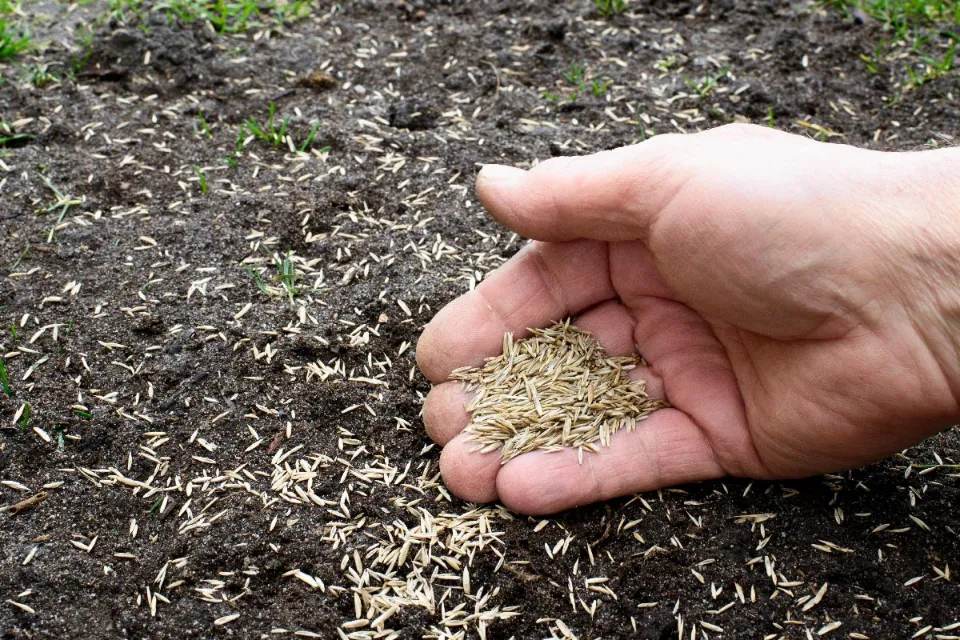
FAQs
Will Seeds Germinate on Top of Soil?
Can grass seed be sown directly on the soil? Yes; in fact, germination will suffer if too much soil is placed on top of the seeds. The professionals at Jonathan Green advise covering them with a thin layer of mulch or topsoil to help keep them warm and encourage growth.
Can I Just Sprinkle Grass Seed?
Is it possible to simply spread grass seed over your current lawn? While it’s possible to simply sow the new grass seed over your existing lawn, taking the time to prepare your lawn beforehand will increase the likelihood of seed germination and improve your end result.
What is the Best Soil for Grass Seed?
Grass grows best in soil that has a pH between 6.0 and 7.5. If your soil is too acidic (below 6.0)—a common problem in cooler wet climates like the Northwest and Northeast—you can add lime to bring it up. A small amount of peat moss, which is naturally acidic, should correct it if it is only slightly alkaline (7.5 to 8.0).
Should I Water before Or After Grass Seed?
Before you cast out new grass seed, it’s important to start with watering. It makes perfect sense that properly watering grass seed is essential to jump-start the germination process that leads to healthy growth because seeds are naturally designed to respond to moisture.
Summary: When to Plant Grass Seed?
The best time to seed a lawn with a cool season turfgrass variety is in the fall, though you can plant grass seed at any time of the year generally. Warm season turfgrass seed should be planted in the spring.
If you have any questions, please leave a comment. My Prime Home tries to give you the best home improvement information. Don’t forget to share the post. Thank you for reading.
READ ABOUT


